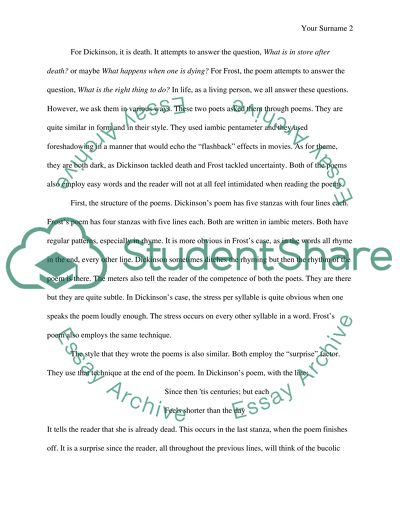Cite this document
(“Dickinson's I Could Not Stop for Death and Frost's The Road not Taken Essay”, n.d.)
Retrieved from https://studentshare.org/literature/1438344-dickinsons-i-could-not-stop-for-death-and-frosts-the-road-not-taken
Retrieved from https://studentshare.org/literature/1438344-dickinsons-i-could-not-stop-for-death-and-frosts-the-road-not-taken
(Dickinson's I Could Not Stop for Death and Frost'S The Road Not Taken Essay)
https://studentshare.org/literature/1438344-dickinsons-i-could-not-stop-for-death-and-frosts-the-road-not-taken.
https://studentshare.org/literature/1438344-dickinsons-i-could-not-stop-for-death-and-frosts-the-road-not-taken.
“Dickinson's I Could Not Stop for Death and Frost'S The Road Not Taken Essay”, n.d. https://studentshare.org/literature/1438344-dickinsons-i-could-not-stop-for-death-and-frosts-the-road-not-taken.


